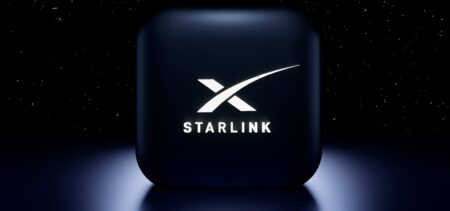With environmental and societal changes happening rapidly worldwide, governments need to speed up their response time. Besides less tedious bureaucracy, there is a much deeper motivation to accelerate government workflows: faster services save lives. Just think of the tragic, global-warming-fueled wildfires. The public sector’s ability to respond is under tremendous strain. In the United States alone, wildfires have already decimated five million acres of land. The flames could cause entire cities to be displaced or destroyed, putting people and animals at risk and damaging infrastructure.
As a result, government agencies are opening their eyes to the power of advanced technology. For instance, the state of California has integrated more than 800 AI-assisted infrared cameras all over its problematic areas. The network is appropriately called ALERTWildfire, which they use to locate and confirm forest conflagrations in record time. This technology incites quick decision-making and has reduced response times colossally.
Here are other ways how state-of-the-art tech helps power the transformation of the public sector:
How Technology is Reshaping Public Agencies
State agencies are trying to improve their services by embracing new technologies. What stands out the most from the changes we have noticed so far is how AI helps reduce risks, streamline processes, and speed up workflows. However, acting fast is challenging in the public sector due to the complexities of broad commitments. The main issue with moving along with this transformation is the fact that agencies attempt to accelerate programs and operations without sacrificing anything. But we can acknowledge that democratic accountability and fairness while working with diverse partners has and should hold great value in the future of tech-savvy governments.
Data-Driven Governance
Government agencies are using robotic process automation and data analytics technology to speed up their work. They also share data better and use new AI technology to improve their interactions with people and businesses. Combining different tools, such as digital twin technology, makes fundamental changes that help people, businesses, and the public sector. For example, they are reducing wait times, simplifying business license applications, and speeding up the grant application process.
Embracing Speed for Better Public Services
Leaders around the world are realizing the benefits of increasing operational speed. This includes providing access to citizen services faster and creating a more efficient business environment. Government agencies are using tools in three main areas to speed up their operations:
- Rethinking interactions between authorities and citizens to deliver services more quickly
- Simplifying the process for permits, licenses, and regulations will help governments and businesses collaborate more quickly.
- Improving how private and legal entities obtain services and receive grants.
Meeting Citizen Needs Through Faster Processes
Understanding people’s needs is critical to taking action. Government agencies can improve their services by simplifying processes. For example, in the United States, the application process for college financial aid used to take over 12 hours, but now, students can apply online in around 10 minutes. Process improvements, user-centered design, and technology adoption made this change possible.
Government agencies have been working to reduce wait times, which can be frustrating for citizens. In the Northwest Territories of Canada, the Mental Health Commission reduced the wait time for counseling from an average of 19 days to just four days. They did this by firstly offering drop-in counseling sessions and e-mental health services. Then, they continued to form a mental wellness and addictions recovery advisory group to provide more efficient, evidence-based mental health and substance-use services.
Fast-Tracking Clean Energy Licenses
Speeding up and making things more efficient can increase satisfaction and impact business investment and activity. Governments are working to speed up the approval of green energy projects to meet climate goals. It’s essential to secure the required licenses and permits quickly for clean energy projects.
Dealing with multiple government agencies can create administrative work for businesses and delay projects. To address this, Denmark has streamlined the process by having a single point of contact for obtaining all the necessary wind farm licenses.
Other European countries are also working on simplifying and speeding up their permitting processes for green energy projects. Streamlining regulations and reducing unnecessary processes can encourage innovation, economic growth, and investment.
The next example takes us to Australia. Their Access Canberra website has made it easier for businesses to get approvals for events and other services. A streamlined sign-up process saved organizations a lot of time by consolidating and simplifying the approval procedure.
The Role of AI and Technology in Accelerating Government Workflows
Some government agencies are using technology to speed up their processes. For example, the US National Institutes of Health uses AI to assign grant applications to suitable peer review groups, reducing the review time from weeks to a day. The Defense Innovation Unit has also improved military procurement by awarding contracts in half the traditional time.
Anticipating Citizen Needs with Technology
Austria has a family allowance program that automatically enrolls parents when a child is born without requiring long application procedures and confirmations.
Along the same lines, Ohio has made Medicaid accessible to newborns on their day of birth by implementing robotic process automation. A procedure that previously took seven to ten business days.
The US Navy’s Amelia conversational AI program can resolve help desk tickets in under 45 seconds.
Estonia’s AI-driven job-matching system has helped unemployed citizens find suitable employment. Almost three-quarters of applicants who found a listing through the system were still satisfied with their jobs six months later, as opposed to only 58% of those who received advice from human resources.
Conversational AI is great at generating instant, real-time status updates for people and legal entities inquiring about their permits. It makes it easy for nonprofits to track their grant applications.
Next, The US Department of Defense is currently testing how generative AI will perform in automating repetitive administrative tasks. They aim to leave employees with enough time to focus on more creative or problem-solving tasks.
Lastly, AI and digital twin technologies are assisting government initiatives in shaping green public transport, as well as in testing policies and programs in real-life scenarios. One such example is San Diego’s digital twin solution, which helped tackle traffic congestion. The program allows citizens to visualize how construction projects might affect their travel time so they can find better routes. It was able to provide findings within a few hours or days.
Steps Governments Can Take To Improve Agility
Machine learning and AI algorithms are showing extreme possibilities, one of them being the ability to speed up government workflows by ten times. Just like any other organization, state agencies can jump on the same train, but they must consider the following steps:
- Breaking down silos is not easy, even for the smallest and most agile of companies, let alone government sections that are traditionally set in their ways. But anything is possible if given enough time and patience. Encouraging departments to work together, share data, and coordinate efforts will certainly make it easier to jumpstart this process. Eventually, authorities will become faster at responding to people’s needs.
- The next step involves reviewing and reimagining existing regulatory processes where needed. Seeing things from a customer experience perspective will play a crucial role in this transformation. Then, public agencies will be able to easily identify bottlenecks, overly complex procedures, and other bureaucratic hurdles to speed up and improve efficiency.
- Once in a while, change how work is done. Teaming up with machines can drastically speed up processes, but making 10x improvements is no small feat. Many times government departments will have to figure out how work should change, from delegating jobs in a different way to investigating options for working with machines.
- Speeding up response times with the help of real-time data and predictive analytics could save people time, property, and even lives.
Governments can use these strategies to solve today’s problems and make the public sector more ready for the future. In a time of fast change, it’s very important for governments to speed up their workflows. By relying on advanced technologies like AI, robotic automation, and digital twins, public agencies can start to anticipate citizen needs instead of scrambling to meet them. From improving service delivery and streamlining regulatory processes to fostering innovation in clean energy and beyond, these advancements reshape governance worldwide. As governments continue to adapt and innovate, the path to a future-ready public sector lies in leveraging technology to drive incredible speed, efficiency, and responsiveness for the benefit of all.













































